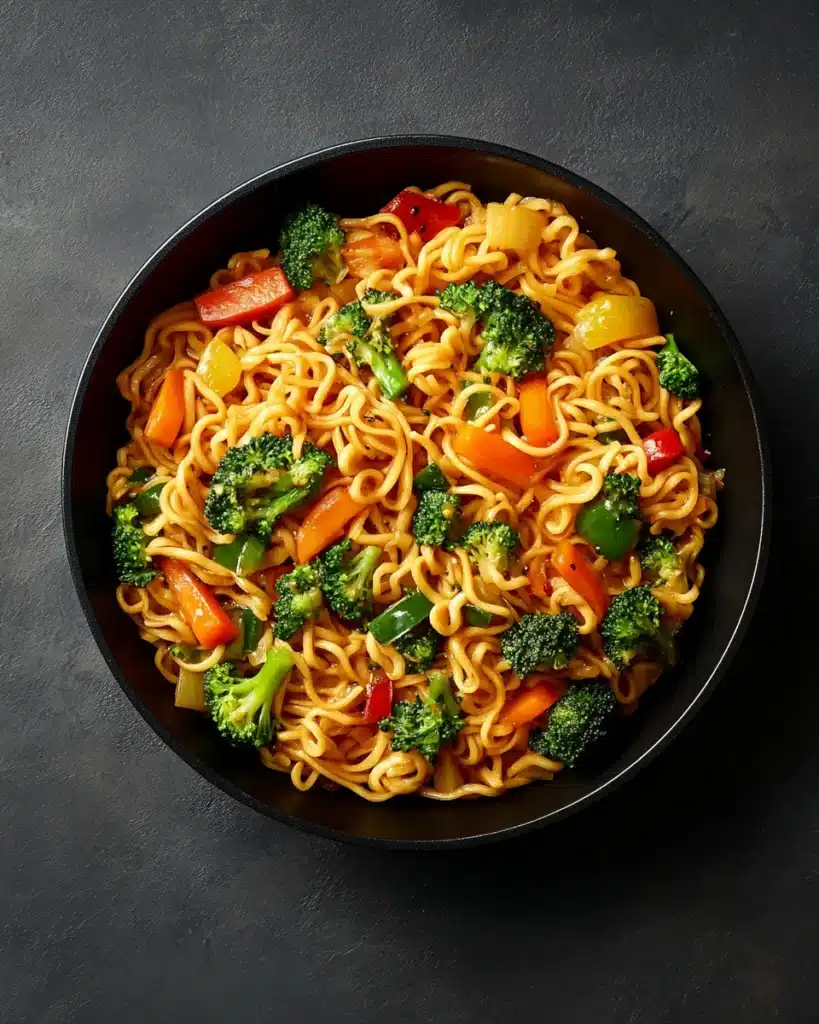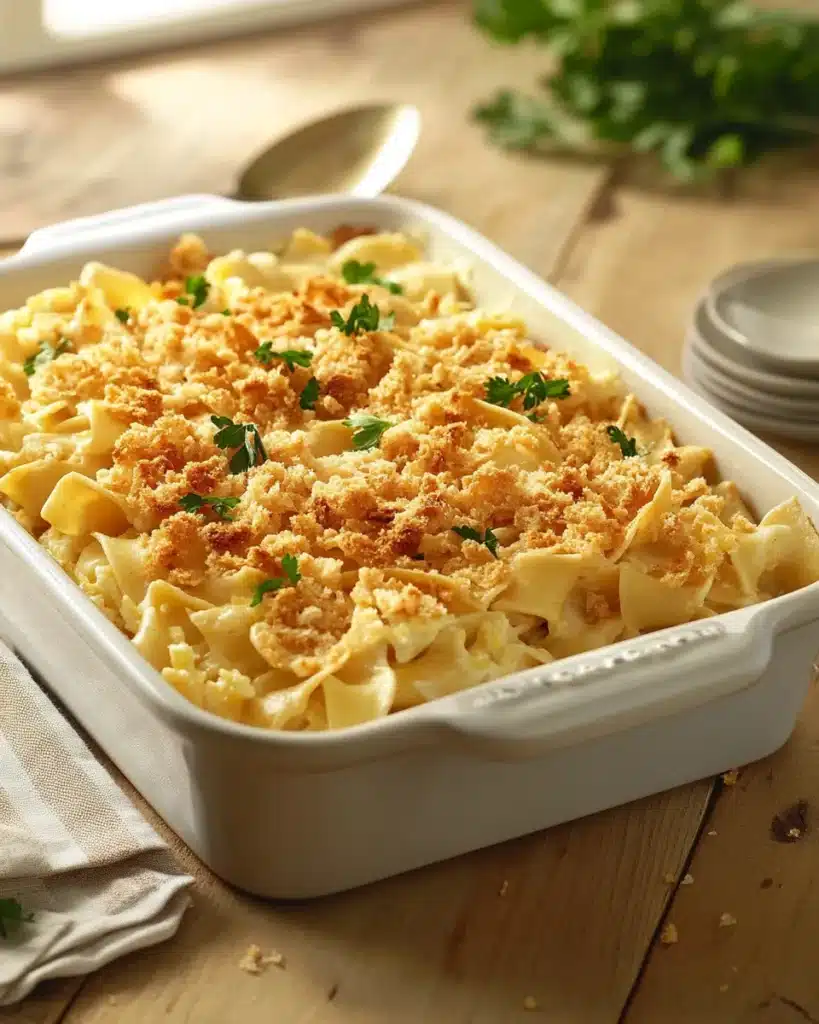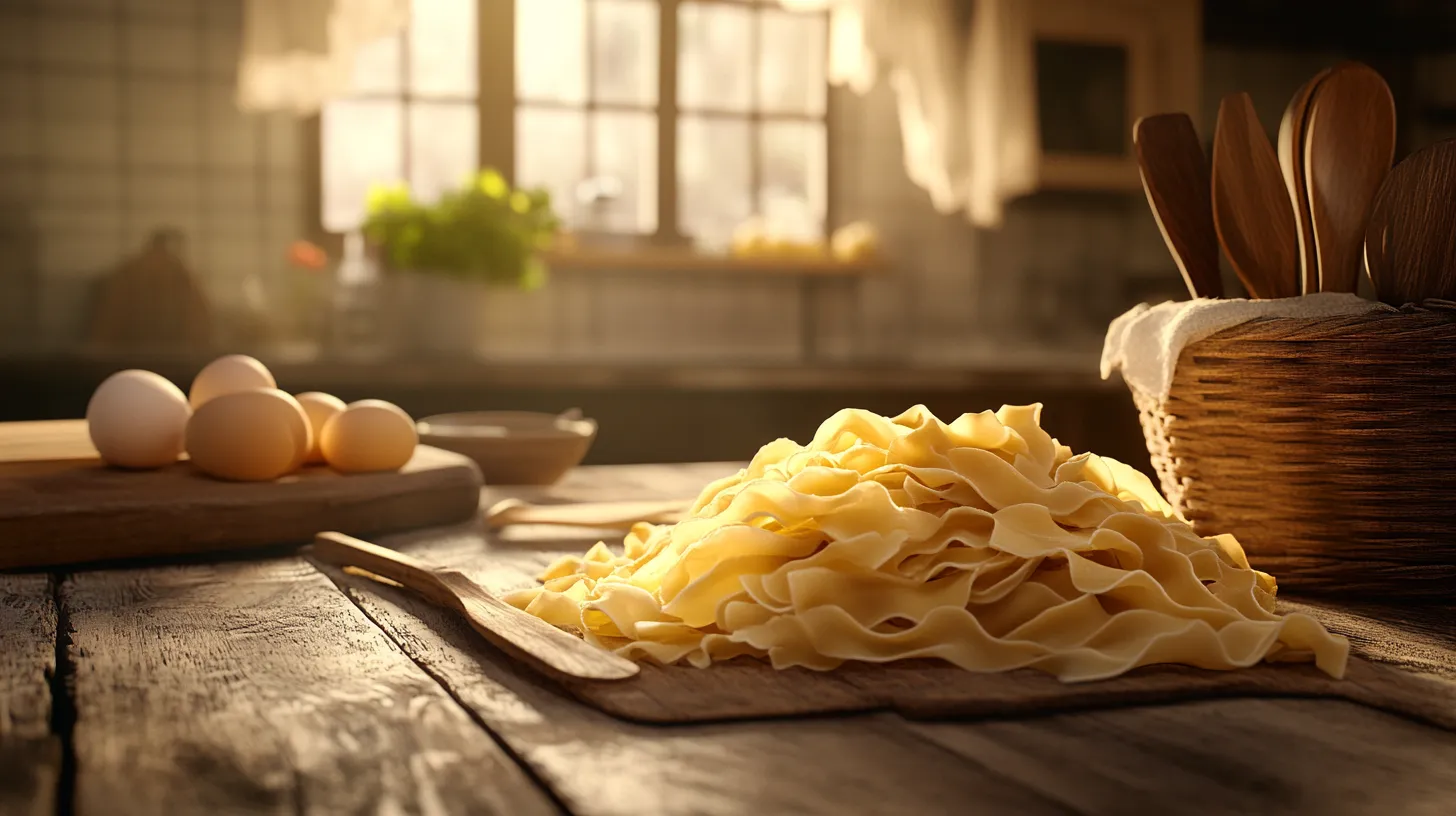Introduction
Wide egg noodles are a must-have in any kitchen. They’re easy to cook and incredibly versatile. You can use them in soups, casseroles, stir-fries, or even simple side dishes. Their soft, wide texture works beautifully to soak up flavors, making every bite delicious.
What makes these noodles so special? They are quick to prepare and adapt to countless recipes. Whether you’re cooking for a busy weeknight or hosting a cozy dinner, they’re a reliable choice. Plus, they pair well with almost any sauce or broth, making them a go-to ingredient for home cooks.
In this guide, you’ll learn everything you need to know about wide egg noodles. We’ll cover how to cook them perfectly and avoid common problems like sticking or sogginess. You’ll also find easy recipes, helpful tips, and a few tricks to make your dishes even better.
Let’s dive in and discover how these noodles can transform your meals. By the end, you’ll feel confident using them in any dish!
What Are Wide Egg Noodles?
Wide egg noodles are a type of pasta made with eggs and wheat flour. Their broad, ribbon-like shape makes them ideal for soaking up sauces and broths. These noodles are commonly used in soups, casseroles, and stir-fries, offering a rich, hearty texture that works well in comfort foods.
Unlike regular pasta, egg noodles have a higher egg content. This gives them a softer texture and a richer flavor. Regular pasta is typically made with only wheat and water, making it firmer and less absorbent than egg noodles. Because of their unique texture, wide egg noodles are often used in dishes where the noodles are the star ingredient.
In terms of nutrition, egg noodles provide a good balance of carbohydrates, proteins, and fats. On average, one cup of cooked egg noodles contains about 220 calories, 4 grams of protein, 3 grams of fat, and 40 grams of carbohydrates. They are a great source of quick energy and can be included in a balanced diet when eaten in moderation.
Are Egg Noodles Healthier Than Pasta?
The question of whether egg noodles are healthier than pasta depends on your nutritional needs. Egg noodles typically have more protein and fat because of the added eggs. This makes them slightly richer in nutrients compared to regular pasta. However, they also tend to have a higher calorie count per serving.
Choose egg noodles if you’re looking for a softer, more flavorful option or need extra protein in your diet. On the other hand, regular pasta may be a better choice if you’re watching your calorie intake or prefer a firmer texture. For those with specific dietary needs, gluten-free options are available for both egg noodles and pasta.
Ultimately, both are great choices when eaten as part of a balanced meal. Your decision should depend on the recipe, flavor preferences, and nutritional goals.
Cooking Wide Egg Noodles
How to Cook Wide Egg Noodles
Cooking wide egg noodles is simple and quick. Start by bringing a large pot of water to a rolling boil. Add a generous pinch of salt to enhance the flavor of the noodles. Once the water boils, add the noodles and stir to prevent them from sticking together.
Cook the noodles for about 7 to 9 minutes, depending on the package instructions. Stir occasionally to ensure even cooking. When the noodles are tender but still firm, drain them immediately in a colander. Rinse under cool water if you plan to use them in a cold dish.
For hot dishes, toss the drained noodles with a drizzle of oil or butter to keep them from sticking. This step also enhances their flavor. Now, they’re ready to be added to soups, casseroles, or stir-fries!
Common Cooking Problems and Solutions
Wide egg noodles are easy to cook, but they can sometimes become sticky or soggy. To avoid this, always use plenty of water and stir the noodles while cooking. If you’re not using the noodles immediately, toss them with a bit of oil to prevent clumping.
Another common issue is overcooking. Egg noodles cook faster than regular pasta, so keep a close eye on them. Check for doneness a minute or two before the recommended cooking time. Drain them as soon as they’re al dente.
If you’ve accidentally overcooked the noodles, try adding them to a dish with a thicker sauce. This helps mask the mushy texture. For soups, cook the noodles separately and add them just before serving to keep them from soaking up too much broth.
Alternative Cooking Methods
While boiling is the most common method, there are alternatives. For stir-fries, try soaking the noodles in hot water for 10 to 15 minutes instead of boiling. This keeps them firm and ready to absorb the stir-fry sauce.
If you’re using frozen egg noodles, add them directly to boiling water without defrosting. They may take an extra minute or two to cook, but the texture remains perfect. For gluten-free noodles, follow the package instructions carefully, as they can be more delicate.
Recipes with Wide Egg Noodles
Comfort Food Recipes
Chicken Noodle Soup
A classic dish that’s both comforting and nourishing, chicken noodle soup is a family favorite. Wide egg noodles add a hearty texture, making the soup even more satisfying.

Ingredients:
- 1 tablespoon olive oil
- 1 medium onion, diced
- 2 carrots, sliced
- 2 celery stalks, sliced
- 3 garlic cloves, minced
- 6 cups chicken broth
- 2 cups cooked, shredded chicken
- 2 cups wide egg noodles
- 1 teaspoon dried thyme
- Salt and pepper to taste
- Fresh parsley for garnish
Instructions:
- Heat the olive oil in a large pot over medium heat. Add the onion, carrots, and celery. Sauté until softened, about 5 minutes.
- Add the garlic and cook for another minute until fragrant.
- Pour in the chicken broth and bring to a boil. Add the thyme, salt, and pepper.
- Reduce the heat and add the shredded chicken and wide egg noodles. Simmer for 8–10 minutes or until the noodles are tender.
- Serve hot, garnished with fresh parsley.
Quick and Easy Dishes
Vegetable Stir-Fry with Egg Noodles
This quick stir-fry combines the softness of wide egg noodles with the crunch of fresh vegetables. Perfect for busy weeknights!

Ingredients:
- 2 cups cooked wide egg noodles
- 2 tablespoons sesame oil
- 1 bell pepper, sliced
- 1 cup broccoli florets
- 1 medium carrot, julienned
- 3 tablespoons soy sauce
- 1 tablespoon oyster sauce
- 1 teaspoon minced ginger
- 1 teaspoon minced garlic
- 1 teaspoon sesame seeds (optional)
Instructions:
- Heat sesame oil in a large pan or wok over medium-high heat. Add ginger and garlic, sautéing until fragrant.
- Add the bell pepper, broccoli, and carrot. Stir-fry for 4–5 minutes until slightly tender.
- Toss in the cooked egg noodles and mix well.
- Pour in soy sauce and oyster sauce, stirring until everything is coated evenly.
- Sprinkle with sesame seeds before serving. Enjoy hot!
Specialty or Gluten-Free Recipes
Gluten-Free Noodle Casserole
For those avoiding gluten, this creamy casserole uses gluten-free egg noodles for a delicious alternative.

Ingredients:
- 3 cups cooked gluten-free egg noodles
- 1 tablespoon butter
- 1 cup cooked chicken or turkey, shredded
- 1 can (10 oz) gluten-free cream of mushroom soup
- 1/2 cup milk
- 1 cup shredded cheddar cheese
- 1/2 teaspoon garlic powder
- Salt and pepper to taste
- 1/4 cup breadcrumbs (gluten-free)
Instructions:
- Preheat your oven to 375°F (190°C).
- In a large bowl, combine the cooked noodles, chicken, soup, milk, cheese, garlic powder, salt, and pepper.
- Transfer the mixture to a greased baking dish. Sprinkle breadcrumbs on top.
- Bake for 25–30 minutes, or until the top is golden brown and bubbly.
- Serve warm and enjoy!
Pro Tips for Cooking Wide Egg Noodles Perfectly
Cooking wide egg noodles can be simple, but a few pro tips can take your dishes to the next level. From avoiding sticky noodles to keeping them flavorful, these tricks will ensure perfect results every time.
How to Prevent Noodles from Sticking Together
To stop noodles from clumping, always use a large pot of boiling water. Adding a teaspoon of oil to the water can help, especially if you’re cooking a large batch. Stir the noodles frequently while they cook to ensure they don’t stick.
After draining, toss the noodles with a bit of butter or olive oil. This keeps them separate and adds extra flavor. If you’re preparing them ahead of time, store them in an airtight container with a light drizzle of oil to maintain their texture.
How to Avoid Soggy Noodles
Wide egg noodles cook quickly, so watch the clock. Check for doneness about a minute before the package instructions suggest. The noodles should be tender but firm—what’s called “al dente.”
If you’re using noodles in a baked dish like a casserole, cook them slightly underdone. They’ll finish cooking in the oven, absorbing the sauce without turning mushy. For soups, cook the noodles separately and add them just before serving.
When and How to Salt the Water
Salting the water is key to flavorful noodles. Add the salt after the water comes to a boil but before adding the noodles. Use about one tablespoon of salt for every four quarts of water. This step ensures the noodles absorb the salt as they cook, making them tasty on their own.
If you forget to salt the water, don’t worry. You can season the noodles later by tossing them in a flavorful sauce or broth. However, salting the water is the easiest way to infuse them with flavor from the start.
Bonus Tips for Perfect Results
- Test for doneness: Bite into a noodle to check if it’s cooked to your liking. Don’t rely solely on time.
- Don’t overcrowd the pot: Cooking too many noodles at once can lower the water temperature, leading to uneven cooking.
- Use a colander for draining: This prevents breakage and ensures all excess water is removed.
- Pair wisely: Wide egg noodles go best with rich, creamy sauces or hearty broths.
Nutritional Insights, Storage Tips, and Fun Facts About Wide Egg Noodles
Nutritional Insights and Benefits
Wide egg noodles are not just tasty but also provide essential nutrients. They are a great source of carbohydrates, which are important for energy. The addition of eggs gives them a small amount of protein and fat, making them more nutrient-dense than regular pasta.
On average, one cup of cooked wide egg noodles contains:
- 220 calories
- 40 grams of carbohydrates
- 4 grams of protein
- 3 grams of fat
Egg noodles also include small amounts of vitamins and minerals, such as iron and B vitamins, which help with energy and metabolism. However, they are lower in fiber compared to whole-grain pasta. To balance your meal, pair them with fiber-rich vegetables or lean proteins.
What Is the Healthiest Noodle to Eat?
Choosing the healthiest noodle depends on your diet. Egg noodles are a good option if you need more protein and enjoy their flavor. Whole-grain pasta, on the other hand, is higher in fiber and slightly lower in calories. Gluten-free options like rice or chickpea noodles work well for those with dietary restrictions. Ultimately, the best noodle depends on your preferences and nutritional needs.
Storage and Meal Prep Tips
Storing wide egg noodles correctly helps them stay fresh and ready for your next meal. Whether cooked or uncooked, follow these tips to keep them at their best.
Storing Uncooked Noodles
Keep uncooked noodles in an airtight container or their original packaging. Store them in a cool, dry place, such as a pantry. Homemade noodles should be dried completely before storing to extend their shelf life.
Storing Cooked Noodles
Refrigerate cooked noodles in an airtight container for up to three days. To prevent them from drying out, toss them with a light coating of oil or butter before storing. Reheat them gently on the stovetop or in the microwave with a splash of water to restore their texture.
Freezing Wide Egg Noodles
Both cooked and uncooked noodles can be frozen for long-term storage. Place them in freezer-safe bags, removing as much air as possible. Cooked noodles should be reheated straight from frozen to maintain their texture and avoid mushiness.
Fun Facts and Trivia About Egg Noodles
Egg noodles have a rich history that dates back thousands of years. They are believed to have originated in China, where noodles have been a staple for over 4,000 years. Over time, egg noodles became popular worldwide and are now used in many cuisines.
Wide egg noodles are often featured in comforting dishes. In Germany, they’re used to make spaetzle, a buttery noodle dish. In Jewish cuisine, egg noodles are the base for kugel, a sweet or savory casserole. These noodles are also the star of many soups and casseroles in American comfort food.
Another interesting fact is how their shape is designed to enhance dishes. Wide egg noodles are perfect for holding thick sauces or soaking up broths, making them a versatile ingredient in hearty meals. Extra-wide varieties are ideal for recipes where noodles need to stand out, like creamy casseroles or stir-fries.
From their fascinating history to their role in delicious recipes, wide egg noodles continue to be a pantry favorite across the globe!
Frequently Asked Questions About Wide Egg Noodles
How do you cook wide egg noodles?
Bring a large pot of salted water to a boil. Add the noodles and stir occasionally. Cook for 7–9 minutes or until tender but firm. Drain immediately and toss with oil or butter to prevent sticking.
Do you cook egg noodles like pasta?
Yes, egg noodles are cooked similarly to pasta. However, they require less time to cook due to their softer texture. Always check for doneness a minute or two earlier than the package instructions suggest.
How do you keep wide egg noodles from sticking together?
Stir the noodles frequently while they cook. After draining, toss them with a little oil or butter. This prevents clumping and enhances flavor.
How do you make egg noodles not soggy?
Cook the noodles until just al dente. If they’ll be used in soups or casseroles, undercook them slightly. They’ll finish cooking in the dish and stay firm.
Can you soak egg noodles instead of boiling?
Yes, for stir-fries, you can soak egg noodles in hot water for 10–15 minutes instead of boiling. This method keeps them firm and ready to absorb sauce.
Why are my egg noodles soggy?
Overcooking is the most common cause of soggy noodles. Reduce the cooking time slightly or drain the noodles as soon as they are tender but firm.
Do you have to dry egg noodles before cooking?
No, drying is not necessary for store-bought noodles. For homemade egg noodles, drying helps them hold their shape during cooking but isn’t required.
Can I just crack an egg into my noodles?
Yes, cracking an egg into hot noodles and stirring quickly creates a creamy, rich texture. This technique is often used in dishes like ramen.
Are egg noodles healthier than pasta?
It depends on your dietary needs. Egg noodles contain more protein and fat due to the eggs but have fewer calories and less fiber than whole-grain pasta.
How do you know when egg noodles are done?
Taste a noodle to check for doneness. They should be tender but still slightly firm, also known as al dente.
Conclusion
Wide egg noodles are more than just a pantry staple—they are a versatile ingredient that can transform everyday meals into something special. Whether you’re making a hearty soup, a creamy casserole, or a quick stir-fry, these noodles provide the perfect texture and flavor to complement any dish.
From their rich nutritional profile to their ability to adapt to different cuisines, wide egg noodles have something to offer everyone. They are quick to cook, easy to store, and pair well with a wide range of ingredients. By following the tips and recipes shared in this guide, you’ll be able to enjoy perfectly cooked noodles every time.
Now it’s your turn to put these insights into action. Try one of the recipes or experiment with your favorite flavors. With a little creativity, wide egg noodles can become a go-to ingredient in your kitchen. Happy cooking!
